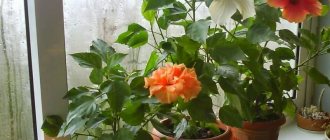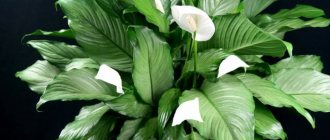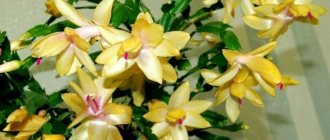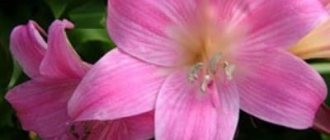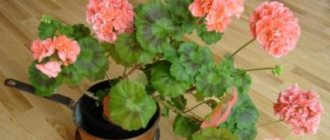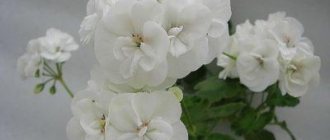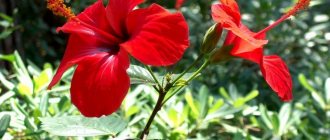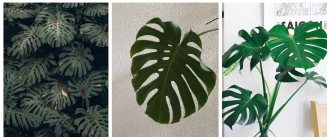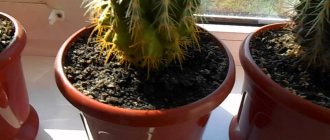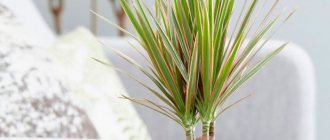Hibiscus Terry is a beautiful and undemanding plant that lives for a long time and delights with its bright color. The overseas guest has long since taken root in Russia. It can grow in the form of a tree, shrub or herbaceous crop. Sometimes trees grow up to one and a half meters in height. And the grassy representatives rise slightly above the ground.
Terry hibiscus (Hibiscus terry) is also called Chinese rose.
Botanical description, history, geography of distribution
The plant dates back to ancient times. The cultivation of terry hibiscus began already in the 18th century. Through step-by-step selection, the plant acquired the appearance and properties that it has now. Maximum decorativeness and unpretentiousness.
The plant is native to the southern regions of China. Wild specimens of terry hibiscus can be found there, as the plant is extremely heat-loving. It is also found in the subtropics and tropics.
The cultivated version of terry hibiscus, obtained by breeders, is intended mainly for home cultivation. Only in regions with a very mild climate is it possible to plant the plant in open ground.
An evergreen plant with oval-shaped leaves with small teeth along the edges. The foliage has a rich green color. The flowers can reach 25 cm in diameter and have different colors: pink, red, pale orange and yellow.
Double hibiscus flowers consist of several rows of petals, creating a multi-layered effect. It is this feature that makes the plant highly decorative. The lifespan of each individual flower is only a day, but new buds bloom daily. Blooms for a long time - from early spring to late autumn. If all care conditions are met, you can achieve year-round flowering.
Hibiscus tea and its beneficial properties
Hibiscus is an ancient tasty and aromatic drink made from hibiscus petals, which was consumed by the ancient Egyptians to quench thirst and maintain vigor. It was called “the drink of the pharaohs,” and the tombs of Egyptian rulers also contain information about it.
It still remains the main national drink in Egypt; it is believed that those people who drink it regularly always remain young, beautiful and healthy. It came to Europe only in the eighteenth century, and gained popularity only two more centuries later.
Hibiscus contains a large amount of antioxidant substances that cleanse the body of toxins and other harmful substances, refresh and relieve the feeling of fatigue. In addition, it restores liver cells and strengthens the immune system. When hot, it increases blood pressure, and when cold, it lowers it.
There is even a legend about the origin of hibiscus. It tells the story of how a traveler, tired of wandering through the jungle, stopped to rest. Having lit a fire and filled the pot with water, he began to ask God to send him at least some food. And then bright red flowers fell straight into the boiling water, turning it ruby.
The traveler drank an aromatic and tasty drink, which gave him strength to move on. On the way, he collected these amazing flowers, and when he arrived in his village, he began to distribute them all to the people he met. This is how hibiscus tea eventually became known throughout the world.
Varieties and varieties
Garden hibiscus has another name - Street. It includes mainly the Syrian species, but other varieties are also grown in practice.
Syriac is originally from China. This is a shrub with green, ovoid leaves ten centimeters long, in the wild it reaches five meters in height. Its varieties come in different shades - pink, white, orange.
Trifoliate hibiscus is native to North Africa, as this area has a less arid climate than the northern or central regions. Today it is actively grown in all areas with good watering of the land. It has a taproot system, a straight stem up to eighty centimeters. Its leaves are petiolate, tripartite, pubescent, and have a diameter of no more than two centimeters. The flowers are yellow with a red center and grow up to four centimeters.
The peculiarity of the variety is that the flowers open early in the morning for a couple of hours, after which they immediately close.
The hybrid species grows in the wild. But it also feels great in the garden. This specimen appeared after crossing several species from North America, namely: Holly, Swamp and Red hibiscus.
People have always considered it a plant of misfortune that brings bad news and death. But this superstition applies to the Chinese rose or Chinese hibiscus.
Syrian and Hybrid hibiscus are not dangerous. They are readily grown in gardens and at home. The flower is revered among gardeners and just amateurs, because it does not require much attention, grows very quickly and blooms beautifully.
Hawaiian and herbaceous hibiscus
Hawaiian hibiscus - the name says it all - is grown in Hawaii. It is a shrub up to a meter high. The leaves are elliptical, concave. The flowers, like other hibiscus specimens, are large, bright red. Hibiscus is herbaceous - can reach a height of two and a half meters.
The colors of the flowers are very diverse - white, pink or red. The flowers and leaves are larger in size than other types of hibiscus, but the bush is not too dense, so gardeners advise pinching the shoots for future lushness of the plant. This type of plant appeared in our area not so long ago.
Herbaceous hibiscus is not fussy to care for.
Trifoliate or northern hibiscus is most often found in areas with a temperate winter climate, for example, in Europe, Crimea and the Far East. In terms of height, this is not a very large specimen; it reaches only 80 centimeters in height.
The flowers are also small in size with yellow tints, and in the center of the bud there is a purple color. This type of hibiscus has one of the longest flowering periods - about a month. In our area, the most popular species is the Chinese hibiscus.
This plant looks beautiful in any interior, but requires proper care.
Terry hibiscus Chinese and tree (Syrian)
Chinese hibiscus is an evergreen shrub that blooms all year round, up to 3 meters high and with leaves reaching a length of 15 cm. Double flower - mostly red in color, the stamens are fused into one tube. This is one of the most common plant species in our area, which is popularly called Chinese rose.
This plant is one of the national symbols of Malaysia. One of the types of Chinese rose is the double hibiscus - a perennial plant that reaches a height of almost two meters. The flower is a large specimen of milky white, red or yellow color and about 15 cm in diameter. The petals of the flower are edged with a peculiar border.
This feature of the plant gave its name to this variety. The bush itself consists of beautiful green leaves with a jagged shape. Tree hibiscus is also called Syrian rose. It is very popular among gardeners because it has large, bright flowers with a diameter of 10 cm.
This type of plant is often used to create hedges in summer cottages. Syrian hibiscus is a small shrub with egg-shaped leaves and beautiful colorful flowers. This “miracle” can be found only in the warmest latitudes of the globe, since harsh winters pose a great threat to this shrub.
Hibiscus Facts: What is this plant known for?
Despite the erroneous dark fame of hibiscus, based on human superstitions and prejudices, hibiscus is very useful. The scope of its application is quite extensive, and the variety of facts collected from all over the world is pleasantly surprising. Do you know that:
- In Malaysia, hibiscus has the status of national flower;
- In the United States of America, an interesting thematic society has existed and operated successfully since 1950. What do you think his activities are related to? It's called the Hibiscus Society!
- Hibiscus is actively used in cooking, since all parts of the plant are suitable for consumption except the root: stems, leaves, flowers. For example, a vegetable or mixed salad can be prepared on the basis of the leaves; meat can be stewed with them. Seeds are an alternative solution to the widespread use of tired sesame. Confectionery products are baked with them, added as a ground spice to coffee and drinks, and also used in snacks and salads as an additional spice;
- Hibiscus flowers are the most popular structural part of the plant and are eaten. The petals are used to prepare the well-known red tea with a pleasant sourness - hibiscus. The uniqueness of the petals is that they retain color when dried due to the large number of coloring pigments, anthocyanins. The hibiscus drink has a rich ruby hue, is very healthy, contains a lot of vitamin C, due to which that distinct sourness is felt in the taste;
- Hibiscus flowers are used in the practice of dyeing fabrics - anthocyanin pigments, which are part of the perianth cells, act as a natural and persistent dye;
- Chinese rose flowers are widely used in medicine. Their properties are numerous: infusions and medicinal drinks based on the structural parts of flowers have an antiseptic and antispasmodic effect, have a diuretic effect, and normalize blood pressure. Due to the content of phytoncides, hibiscus is included in antiparasitic agents, causes an anthelmintic effect, and removes toxic and side metabolic elements from the body;
- Hibiscus contains a large amount of oxaloacetic acid (OA) and linoleic acid. Drinking teas with hibiscus in this case prevents the formation of cholesterol plaques and normalizes the functioning of the urinary system;
- Hibiscus seeds are used by local people in the Pacific Islands and Asian countries to make necklaces;
- In China, one of the cities is named after a flower - Chengdu. Literally translated, it means “city of hibiscus”;
- Hawaiian women can be proud that they have become a symbol of beauty and their association with hibiscus, as they love to use the flowers to decorate their hair and to make flower necklaces, which is why it is called “the flower of beautiful women”;
- The Fiji Islands have a national holiday called “Fire Hibiscus Day” in honor of this plant. During the festival, the streets are decorated with garlands of flowers, and processions of young girls dressed in decorations made from the same hibiscus flowers pass through the streets dancing and singing.
Photos of varieties
It is known why double hibiscus is called so: because of the spectacular multi-layered flower. A very popular variety both in Europe and in the Moscow region, it can be grown both indoors and in open ground.
A large number of breeding varieties are known that are distinguished by high decorative qualities (for example, lilac-raspberry Ardens or Syrian chiffon, which blooms with white (White variety), lavender or pink flowers).
Popular shades of this variety:
Today you can even see orange, white, peach terry hibiscus, which is rare, but, nevertheless, amateur gardeners have already managed to acquire it.
White
The variety is represented by a shrub 1.5-3 m high, 1.5 m wide with many bright green leaves. The height and width of an adult plant are the same. White hibiscus decorate gardens, front gardens, and front areas.
white double hibiscus
Yellow
Yellow hibiscus is a typical representative of the double plant. The difference between it and the Chinese rose is the size of the buds and colors. Yellow flowers are often used in landscape design to decorate a garden plot.
yellow double hibiscus
Red
The most common type, similar to the Chinese rose. The bright green foliage stands out against the background of large red buds. Bright colors give the plant a presentable, impressive look.
Red double hibiscus
Pink
The variety is represented by a small tree; during the entire season it is abundantly covered with emerald leaves. When opened, the terry buds are 13-15 cm in diameter. Winter gardens and home greenhouses are decorated with pink hibiscus.
Hibiscus pink terry
Peach or orange
Peach flowers are often confused with pink flowers due to the similarity of shades. The close fit of the petals creates an imitation of terry. Gazebos and verandas are decorated with peach hibiscus.
Hibiscus peach terry
How to care for a flower
Swamp hibiscus: planting and care in open ground
In order for the plant to please the eye, it is necessary to follow some rules.
- Choose the right place.
The biggest danger for an indoor or garden plant is the bright sun with its direct rays and excessive drafts. The best windows for hibiscus will be those facing west or east, because there the plant will not be exposed to the scorching sun.
Hibiscus on the window
In summer, you can take it outside into the garden, avoiding windy places, or simply frequently ventilate the room in which the plant is located.
- Watch the lighting.
In summer, there is a danger of sunburn, so it is recommended to remove the pot from the window or shade it, creating diffused lighting. Yellow double hibiscus is especially sensitive to light.
The winter period is the time when it may even be necessary to additionally “light up the life” of the hibiscus.
Important! For good flowering of hibiscus there is one important condition: daylight for at least 8 hours.
- Follow recommendations regarding watering.
Like many other flowers, hibiscus during the period of bud formation and flowering itself needs good watering, which should not be excessive. To avoid this, it is recommended to take pots with special holes through which excess moisture will evaporate, and lay a good layer of drainage on the bottom.
You also need to make sure that there is no standing water in the container under the flowerpot; it must be poured out half an hour after watering. Excess moisture is a threat to the root system.
- Adjust temperatures.
Terry hibiscus loves warmth. In order for it to grow actively and not have problems with flowering, you need to maintain the temperature between 18 and 25 degrees.
A drop below 9-10 is fraught with loss of foliage. In order for buds to form on the bush, the “correct” temperature is also needed - a range between 12 and 17 degrees.
The right temperature is essential
It is for this reason that from the end of autumn to the beginning of spring, a warm, dark place will be ideal for the plant, then it will bloom profusely and be strong.
- Fertilize.
In order for double hibiscus to please you with its beautiful flowers longer, you must not forget about monthly fertilizing with nitrogen. Complex fertilizers such as “Rainbow” or “Ideal” will also not be superfluous.
Features of transplantation
While the hibiscus bush is small, it is recommended to replant it every spring, gradually increasing the volume of the flowerpot by several centimeters. An adult plant does not require frequent replanting (no more than once every 4 years) and will feel comfortable in a pot with a diameter of about 40 cm.
When choosing soil for your pet, you need to remember that it needs neutral acidic soil with approximately the following composition (the number of parts is indicated): 4: 3: 1: 1 - turf soil, deciduous soil, sand, humus. For nutritional value, you can add charcoal or peat substrate.
Hibiscus transplant
Features of terry varieties
Most often, at home, gardeners grow the most common varieties of hibiscus, such as the Chinese rose. But some manage to grow exotic varieties, which often germinate in open ground. Chinese rose is an evergreen plant with rich green, oval-shaped leaves with fine teeth along the edge.
In ordinary varieties of hibiscus, flowering reaches 20 cm in diameter, and the color can be different: pink, red, yellow, orange, white. But this is not the whole range of colors; breeders produce colors that are difficult to describe in words. Hibiscus flowers are multi-layered, have several rows of petals - it is this feature that makes the plant attractive.
Each individual flower only lives for a day, but new buds bloom every day. Flowering lasts quite a long time, approximately from spring to autumn. Naturally, in order for a houseplant to delight with abundant flowering, it is necessary to follow certain rules of care.
Hibiscus lives for about 20–22 years, and can reach a height of 3 m. At the moment, there are about 300 types of varieties of this crop. A description of the most common types is given below.
Terry yellow hibiscus is one of the typical representatives of this species. It differs from the ordinary Chinese rose in its rather large flowers, painted in a bright yellow color. The plant is successfully grown indoors and is extremely popular for its attractive decorative appearance.
The petals are quite close to each other, and their number is so large that the flower really seems double. Flower growers have different opinions about care at home: some claim that the flower is unpretentious, while others insist that caring for an exotic plant is very difficult.
Hybrid hibiscus grows like a herbaceous plant, but has unusually bright and large flowers. This plant is not intended for growing at home; most often it acts as a decoration for flower beds, sidewalks, boulevards; the variety is planted in parks and squares. Flowers are widespread in the southern part of Russia.
Dissected hibiscus looks like a small shrub with very thin leaves with a glossy surface. It blooms with small red flowers, up to 5 cm in diameter. The petals are rounded at the bottom and form a shaggy ball shape. This variety is mainly grown at home or in greenhouses.
Syrian hibiscus is native to India and China. It is with this flower that the inhabitants of the island of Haiti decorate themselves and tourists. The flower is considered a symbol of prosperity and long family life, which is why it is woven into wedding wreaths. It blooms with white inflorescences, at the base the flower has a deep pink tint.
Terry hibiscus: description and characteristics
The habitat of terry hibiscus is considered to be the territories of China, Asia, Africa, America, and Australia. Breeders dubbed the plant “Chinese rose” because of the unusual shape of the buds. The petals are collected in rows, creating a multi-layered structure.
Hibiscus is versatile; it decorates flower beds, sidewalks, boulevards, or is used as a house flower. The shrub grows up to 2.5-3 m, has smooth stems, variegated leaves of bright green color.
The bud opens to 13-19 cm in diameter, 24 hours after flowering it becomes a kind of seed box.
The plant is considered a terry plant due to the multi-layered petals. The flowers are bright, large, the leaves are thin, with a glossy surface. The petals are rounded at the bottom and look like a furry ball. The variety is suitable for growing in a greenhouse or greenhouse.
Proper care of hibiscus
Growing hibiscus at home is not a simple process. The plant requires the creation of a suitable microclimate, as well as constant feeding. Sharp temperature fluctuations, excessive watering, lack of light and even changes in lighting angle are factors that can lead to the dropping of flower buds. Proper care will provide the crop with rich colors and a long lifespan.
Soil requirements
It is best to replant the flower into a new container in the spring. You need to prepare the soil for terry hibiscus yourself. To do this, mix turf, leaf, peat soil and sand in equal proportions. After two or three days, prune and shape the crown of the plant.
Terry hibiscus loves moist soil, especially during the growing season. Do not allow the top layer of soil in the pot to become dry. In addition, the crown of the flower must be sprayed with water daily. Otherwise, such a tricky pest as a spider mite may settle in it. With low humidity and high air temperatures, mites will certainly appear.
During the growing season, once a month you need to fertilize the soil with nitrogen fertilizers. They promote active flowering of hibiscus and the prevention of flower diseases.
Home care
Temperature
Comfortable summer temperature for a flower is +23 + 25, in winter it should be reduced to +18 degrees. If the temperature drops below +12, the hibiscus will begin to drop buds.
If the temperature is maintained, the plant can bloom almost all year round.
Watering
Terry hibiscus is a moisture-loving plant, but does not tolerate excess moisture. Therefore, watering should be moderate. Also, do not allow the earthen ball to dry out. The pot in which the hibiscus is planted should have a deep tray so that excess water comes out freely and does not stagnate in the soil.
Light
The plant loves light, but it should not be placed in direct sunlight. It is best to shade the hibiscus a little so that the light is diffused. Otherwise, the leaves will begin to curl, wither and fall off.
Priming
Comfortable soil for hibiscus should be breathable and thoroughly loosened, with neutral acidity. A deviation in acidity in one direction or another makes it difficult for the plant to take nutrients from the soil. It is imperative to organize drainage.
Substrate composition:
- Turf, leaf and coniferous soil.
- Peat.
- Manure.
- Sand.
- A small amount of charcoal.
Trimming
- Pruning is done with sharp scissors.
- Cut off shoots growing parallel to the main branches.
- All dry branches are removed.
Feeding
To stimulate flowering, it is advisable to apply mineral and nitrogen-containing fertilizers. The plant must be fertilized periodically, once every two weeks, with water-soluble compounds containing:
- copper;
- iron;
- potassium;
- phosphorus;
- manganese;
- nitrogen;
- magnesium.
In the spring, it is necessary to add additives with a high nitrogen content, in the summer - phosphorus and potassium.
Pot
To plant hibiscus, it is best to opt for a ceramic pot, as it allows air to pass through quite well and does not contribute to moisture stagnation.
Transfer
- Young plants need annual replanting.
- The procedure is best carried out in mid-spring. Repot until the pot measures approximately 35cm in diameter.
- Adult plants are moved to larger containers every 3-4 years.
- If the acidity of the soil is suitable and there are no insects in the substrate, then the hibiscus can be left in the old container, replacing only the top layer of soil to a thickness of about six centimeters.
Wintering
- In winter, the flower needs additional lighting in the form of fluorescent lamps. Daylight hours should last at least eight hours. If the lighting is insufficient, the hibiscus will stop blooming.
- The optimal temperature is +16+18 degrees.
- In winter, fertilizing is applied less frequently, once a month, half the dose of potassium and phosphorus fertilizers.
If the hibiscus is in cold or almost dry conditions, stop feeding completely.
For information on the features of caring for terry hibiscus at home, watch the following video:
What to remember
- Loves sunlight, so should be kept in the brightest room. But hibiscus cannot tolerate direct sunlight. To prevent the plant from getting sunburn, it should be planted in diffuse partial shade or on the western or eastern side.
- Plant in loose, fertile, well-drained soil. The tropical plant does not tolerate stagnation of water in the roots and needs good nutritious soil.
- Trim annually. To obtain a neat bush with a beautiful crown and flowering branches, cut young shoots to ⅓ of the length every spring and remove old branches.
- Watering in the summer is abundant (as the top layer of soil dries), combined with daily spraying. Don't forget to let the water settle before watering.
- After watering, the soil in the pot must be slightly loosened to provide the roots with an influx of fresh air.
- In spring and summer, during its active growth, it needs fertilizing containing nitrogen-phosphorus-potassium in the proportion 15-5-30 (NPK). Suitable fertilizers: “Aquarin flower”, Master 15:5:30, HB-101 and others.
- Never use high phosphorus fertilizers on varietal hibiscus. An excess of this element causes chlorosis and stops flowering.
Hibiscus orange Bangkok
Orange Hibiscus Bangkok stands out among other hibiscus flowers. If you love indoor hibiscus, the Bangkok Orange Flower Hibiscus is a must have in your collection. The number of Hibiscus Bangkok in the photo catalog is 10.
The orange hue of the flower's petals is difficult to capture in photos or videos. But in this video we were able to almost accurately convey the shade of the petals of this flower during the spring flowering period.
How to maintain flowering
Terry Chinese roses need to be systematically fed with fertilizers. This should be done every two weeks during watering. The best fertilizers are special fertilizers for Chinese roses. You can buy them at any decent flower shop.
There is one more feature of this plant. The flower reacts very strongly to the ambient temperature. The optimal temperature for it in summer is 22-23°C, and in winter 18°C. Under such conditions, double hibiscus will bloom all year round.
At temperatures of 12°C and below, flowers begin to fall abundantly, and new buds do not appear. Of course, the air temperature at home in winter is usually above 18 degrees, so spray the crown of the flower with water from a spray bottle once a day.
Similar flowers
- The shape of the inflorescences of hibiscus is similar to mallow, since they are representatives of the same family.
- Also, in the shape of the flower, hibiscus is similar to some types of clematis.
- The core of the hibiscus flower is similar to eustoma.
- Double balsam is similar to double white hibiscus.
- Hybrid varieties of hibiscus in the flowering phase resemble hellebore.
Hibiscus is a plant that is hardy and unpretentious enough to grow at home. Fast growth, abundant flowering, subject to simple care rules, as well as a magnificent decorative appearance, make this plant a welcome guest in the homes of flower growers.
Reproduction
There is nothing complicated about propagating garden hibiscus. All methods are available even to an inexperienced gardener: sowing seeds, cuttings, layering and even grafting.
The layering method is complex and is not used for houseplants.
Propagation of hibiscus by seeds
If you decide to grow a plant from seeds, this should be done from mid-winter to March. Immediately before planting, the material is soaked in a dark pink solution of potassium permanganate for half an hour, and then for another day in a solution of epin.
This is followed by sowing into a container, which is pre-filled with favorable soil with a mixture of sand and peat. The bed is covered with glass or film, creating a kind of greenhouse, and placed in a warm place (optimum temperature +25C). You can also install bottom heating. The greenhouse must be regularly ventilated, condensation removed and the soil moistened.
With the appearance of the first full-fledged leaves, the hibiscus can be transplanted into separate containers. If the sprouts stretch out a lot, it means they don’t have enough lighting, and you need to organize additional lighting.
Cuttings
Let's consider cuttings from Syrian hibiscus at home.
In the summer, cuttings are prepared: shoots with 2 or 3 internodes. The lower cut is treated with a growth stimulator and rooted in a greenhouse with peat soil mixture, heated from below. After a month, roots appear, and the seedlings are placed in separate containers with a mixture consisting in equal parts of peat, leaf soil, turf and coarse calcined sand. The bushes are watered, then pinched to stimulate branching, and once grown they are planted in the garden, awaiting the first flowering in a year. It is even easier to grow roots from cuttings immersed in a container of water.
Planting garden hibiscus
The best time to plant hibiscus is in the spring, when the soil warms up above 15 ̊C. Despite all its winter hardiness, the species is quite sensitive to severe frosts, so it takes time to take root and strengthen.
For the good development of the ornamental hibiscus shrub, it is extremely important to choose the right place, which should be warm, sunny and protected from the wind.
Like roses, the crop grows well in permeable, sandy loam soils with a high humus content. Soil reaction is neutral to slightly alkaline.
Before planting the seedling, dig a hole 2 times wider than the size of the root ball. The distance from buildings and other plantings should be at least 1-1.5 meters.
Variety “Pink Chiffon”
At the bottom of the pit, lay out a 15-centimeter drainage layer of broken brick or crushed stone, then the same layer of coarse sand, which is sprinkled with compost mixed with soil. Place the roots in the hole and cover with a pre-prepared soil mixture of the top layer of soil, compost, sand and peat, taken in proportions 2: 3: 2: 1.
If the soil is initially enriched with sand, then a drainage sand layer is not needed. The root collar after planting should be slightly below ground level. The seedling is well watered with about 7-10 liters of water.
Immediately after planting your garden hibiscus, you should cut all shoots in half. This procedure, reluctantly performed by gardeners, is aimed at forming a dense and lush crown, as it stimulates the growth of new shoots.
The plant grows in one place for about 20 years, so hibiscus is transplanted only when absolutely necessary and only for young specimens.
Diseases and pests
An undeniable advantage in the technique of growing shrubs is its natural endurance. Possible problems with plant propagation can only arise if agricultural practices are grossly violated. Small mistakes in caring for the plant will not cause it to wither, unless they occur constantly. However, there are a number of problems that many gardeners who grow exotic flowers face.
Diseases:
- Chlorosis is a disease in which foliage changes its color from green to yellow, lemon or whitish.
- Sunburn - exposure to direct sunlight on an unadapted plant causes white spots to appear on the leaves.
- Bacterial spotting - the edges of the affected plant are covered with rotting yellow spots.
- Vascular wilt is a disease caused by fungi. The branches and trunk dry out before they have time to shed their leaves.
Pests:
- Spider mite - the leaves of the affected plant become dull and become covered with yellow specks.
- Greenhouse and tobacco whiteflies - the leaves turn yellow and become covered with sticky secretions.
- Aphids - attack young leaves. When damaged, they become deformed and become sticky.
- Scale insects - waxy discharge appears on the petioles and in the axils of the leaves.
- Scale insects and false scale insects - brownish or pale brown tubercles appear on the stems of the plant.
Yellowing and wilting of foliage
Due to a sudden violation of maintenance conditions, which include low temperature, lack of water or high humidity, the plant may stop blooming, the buds will fall off, and the leaves will begin to turn yellow. Overwatering the plant or too much sunlight can cause the leaves to change color. Yellowing of leaves can also be associated with a deficiency of minerals in the plant. Insufficient or incorrect feeding can cause problems with vegetative growth and flowering of hibiscus.
Hard, irregularly shaped leaves
A popular problem for shrubs is the topic of pests that infect plant tissue and interfere with their growth. Aphids and spider mites are the main sources of infection. The cause of wilting of hibiscus can be ineffective treatment with chemicals, which can provoke a phytotoxic reaction of the bush. The leaves will change shape and become stiff.
Spots on leaves
Sometimes light brown spots appear along the edges of the leaves - this is also the effect of an incorrect approach to growing shrubs. It indicates improper feeding of the plant or a high concentration of mineral fertilizers in the soil. If leaves begin to fall off rapidly, these are the first signs of chlorosis - insufficient levels of calcium chlorine in the water.
Numerous fungal diseases can be caused by a deficiency of vital elements in the plant body. They destroy leaves, flowers and stems. Externally, they are not difficult to identify - rust-colored spots or black dots form on the leaves, and the stems are covered with dark depressions.
Use in landscape design
Terry hibiscus is used by landscape designers in different ways:
- They form a bouquet planting of 4-6 plain or multi-colored flowers. As the shrubs grow, their foliage will close together, forming one large planting with many flowers. You can place a bench or swing next to the flower area.
- A couple of trees are planted side by side, and their trunks are intertwined during the growing season. During flowering, the foliage will take on a spherical shape.
- Hibiscus is planted separately; against the background of bright green grass it will look bright, catchy, and attractive.
- The plant is suitable for flower beds and mixborders. Low-growing specimens are used to decorate borders.
- Roses are excellent companions to double hibiscus. It is recommended to give preference to low-growing roses.
- Screens, walls, fences, and gazebos are decorated with herbaceous plants. Bright buds with emerald leaves are perfect for white wrought iron or wooden garden furniture.
- Tree-like shrubs are planted behind a fence, gate, and are combined with coniferous trees and juniper.
- Swamp hibiscus can be used to decorate a stream or pond.
Terry hibiscus is considered a not too weedy plant; it is suitable for decorating front and entrance areas. The flower goes well with catnip, mint, and lavender.
Reviews from gardeners
Tatiana Nechaeva-Troyan, Kyiv
I would like to please you a little about wintering hibiscus (not grass-like). They overwinter normally, only in the winter I press the branches closer together and wrap them in three layers of agrofibre.
Artem's mom
My hibiscus have been blooming non-stop for 2 years, all year round. They don't even rest. Perhaps the secret is in Japanese natural fertilizer, which I use once every 3 weeks from the very beginning of purchasing flowers.
Tatiana Panasenko
I have long dreamed of purchasing a small compact terry hibiscus bush. Finally my dream came true. Now I have an amazingly beautiful Sancho flower with white and pink petals. Even though it blooms for one day, but how!
Types of coloring and photos of indoor flowers
White
Large double snow-white flowers cover the bush with a thick hat. Thanks to this simultaneously catchy and delicate scattering, the plant looks luxurious and, at the same time, stylish.
Red
The plant has classic hibiscus bright green foliage. It blooms with catchy double flowers of bright scarlet color. Such a plant may well become an independent element of the interior, acting as a catchy accent.
Pink
Great for creating bonsai. A plant that has not been shaped visually resembles a lushly blooming rose bush.
Peach
The most unusual coloring of terry hibiscus. The muted orange color against the backdrop of bright green foliage creates a natural combination of colors, which is difficult to find an alternative among domestic flowers.
Yellow
A typical representative of the Malvaceae family. The plant is successfully grown indoors and is highly valued for the decorative appearance of its flowers, which are quite large in size and bright yellow in color. At the same time, the petals are located very close to each other, there are a lot of them, and therefore the flower seems double.
Video
Sources
- https://dacha.expert/domashnie-rasteniya/tsvetushhie/gibiskus/vidy-gi/mahrovyy.html
- https://jubkiplus.ru/gibiskus-makhrovyi-kitaiskaya-roza.html
- https://vusadebke.com/cvetovodstvo/komnatnye-cvety-i-rasteniya/gibiskus/gibiskus-mahrovyy.html
- https://saddomashniy.ru/belyj-mahrovyj-gibiskus.html
- https://greenerydom.ru/gibiskus-sadovuy.php
- https://floriums.ru/gibiskus-mahrovyy
- https://zverjata.ru/cvety/kitajskaya-roza-mahrovaya.html
- https://Trizio.ru/gibiskus-80-foto-833
- https://sait-pro-dachu.ru/gibiskus-krasnyj-maxrovyj-u-vas-na-podokonnike/
- https://cvetoshki.ru/mnogoletniki/sorta-gibiskusa-dlya-domashnego-razved.html
- https://www.supersadovnik.ru/text/gollandskie-i-floridskie-gibiskusy-vse-sekrety-vyraschivanija-1006903
- https://sodla.ru/komnatnye-rasteniya/vse-ob-uhode-za-komnatnym-gibiskusom-obrezka-i.html
- https://grow-me.ru/komnatnye/gibiskus/mahrovyj-4981/
- https://qlumba.com/sad/797-gibiskus-mahrovyj
- https://kakuhazhivat.ru/uxazhivanie-za-gibiskusom-sirijskim-hibiscus-syriacus
- https://MoeFermerstvo.ru/tsvety/gibiskus-mahrovyj
